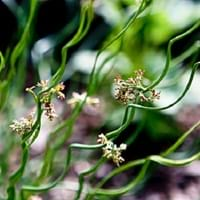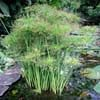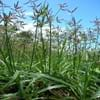Life Span
Perennial
Perennial
Origin
World/Pandemic, North America, Europe, Russia/Siberia, Africa, Asia
United States, Southeastern United States
Types
not available
Bigleaf hydrangea, Hortensia, Smooth hydrangea, Oakleaf hydrangea, Annabelle
Number of Varieties
Not Available
Habitat
All sorts of environments, Banks, ditches, marshes, Shores of rivers or lakes
Forest edges, Hillside, Woods
USDA Hardiness Zone
6-9
5-9
Sunset Zone
H1, 1a, 1b, 2a, 2b, 3a, 3b, 4, 5, 6, 7, 8, 9, 10, 11, 12, 13, 14, 15, 16, 17, 18, 19, 20, 21, 22, 23, 24
Not Available
Habit
Clump-Forming
Clump-Forming
Flower Color
Brown
Blue, Dark Purple, Light Purple, Red, White
Flower Color Modifier
Bicolor
Bicolor
Fruit Color
Not Available
Not Available
Leaf Color in Spring
Green
Green
Leaf Color in Summer
Green
Dark Green
Leaf Color in Fall
Green
Dark Green
Leaf Color in Winter
Green, Tan, Sandy Brown
Light Green
Leaf Shape
Long hair-like leaves
Oblovate
Plant Season
Spring, Summer, Fall, Winter
Spring, Summer, Fall
Sunlight
Full Sun, Partial Sun
Partial shade, Full Shade
Type of Soil
Clay, Loam, Sand
Clay, Loam
The pH of Soil
Acidic, Neutral
Acidic, Neutral
Soil Drainage
Poorly Drained
Poorly Drained
Bloom Time
Early Summer, Summer, Late Summer, Early Fall
Spring, Summer
Tolerances
Drought
Drought
Where to Plant?
Ground, Pot
Container, Ground
How to Plant?
Divison, reseeds
Seedlings, Stem Planting
Plant Maintenance
Medium
Medium
Watering Requirements
Does not require regular watering
Not Available
In Summer
Lots of watering
Average Water, Ample Water
In Spring
Moderate
Moderate
In Winter
Average Water
Average Water
Soil pH
Acidic, Neutral
Acidic, Neutral
Soil Type
Clay, Loam, Sand
Clay, Loam
Soil Drainage Capacity
Poorly Drained
Poorly Drained
Sun Exposure
Full Sun, Partial Sun
Partial shade, Full Shade
Pruning
Prune to control growth, Remove damaged leaves, Remove dead branches, Remove dead leaves
Remove damaged leaves, Remove dead branches, Remove dead leaves
Fertilizers
All-Purpose Liquid Fertilizer
All-Purpose Liquid Fertilizer
Pests and Diseases
Not Available
Red blotch
Plant Tolerance
Drought
Drought
Flowers
Insignificant
Not Available
Flower Petal Number
Single
Single
Foliage Texture
Fine
Fine
Foliage Sheen
Glossy
Glossy
Evergreen
No
Semi-Evergreen
Attracts
Bumblebees, Flying insects
Bees, Flies
Allergy
Unknown
Chest tightness, Diarrhea, Dizziness, Nausea, Vomiting
Aesthetic Uses
Informal Hedge, Woodland margins
Not Available
Beauty Benefits
Not Available
Not Available
Edible Uses
No
Not Available
Environmental Uses
Air purification
Air purification
Medicinal Uses
Not Available
Fever, Kidney problems, Urinary tract problems
Part of Plant Used
Not Available
Flowers, Root
Other Uses
woven into the covering of tatami mats
Not Available
Used As Indoor Plant
No
Not Available
Used As Outdoor Plant
Yes
Yes
Garden Design
Bog Garden, Container, Mixed Border, Water Gardens
Bog Garden, Mixed Border
Botanical Name
JUNCUS effusus f.Spiral
DRYOPTERIS celsa
Common Name
Curly wurly
Log Fern
In Hindi
Corkscrew Rush
Hydrangea
In German
Corkscrew Rush
Hortensie
In French
Corkscrew Rush
Hortensia
In Spanish
Corkscrew Rush
Hortensia
In Greek
Corkscrew Rush
υδραγεία
In Portuguese
Corkscrew Rush
Hortênsia
In Polish
Corkscrew Rush
Hortensja
In Latin
Corkscrew Rush
Hibiscus
Phylum
Magnoliophyta
Not Available
Class
Liliopsida
Not Available
Order
Poales
Not Available
Family
Juncaceae
Dryopteridaceae
Genus
Juncus
Not Available
Clade
Angiosperms, Commelinids, Monocots
Not Available
Tribe
Not Available
Not Available
Subfamily
Not Available
Not Available
Number of Species
Not Available
Not Available
Importance of Corkscrew Rush and Log Fern
Want to have the most appropriate plant for your garden? You might want to know the importance of Corkscrew Rush and Log Fern. Basically, these two plants vary in many aspects. Compare Corkscrew Rush and Log Fern as they differ in many characteristics such as their life, care, benefits, facts, etc. Every gardener must at least have the slightest clue about the plants he wants to plant in his garden. Compare their benefits, which differ in many ways like facts and uses. The medicinal use of Corkscrew Rush is Not Available whereas of Log Fern is Fever, Kidney problems and Urinary tract problems. Corkscrew Rush has beauty benefits as follows: Not Available while Log Fern has beauty benefits as follows: Not Available.
Compare Facts of Corkscrew Rush vs Log Fern
How to choose the best garden plant for your garden depending upon its facts? Here garden plant comparison will help you to solve this query. Compare the facts of Corkscrew Rush vs Log Fern and know which one to choose. As garden plants have benefits and other uses, allergy is also a major drawback of plants for some people. Allergic reactions of Corkscrew Rush are Unknown whereas of Log Fern have Chest tightness, Diarrhea, Dizziness, Nausea and Vomiting respectively. Having a fruit bearing plant in your garden can be a plus point of your garden. Corkscrew Rush has no showy fruits and Log Fern has no showy fruits. Also Corkscrew Rush is not flowering and Log Fern is not flowering . You can compare Corkscrew Rush and Log Fern facts and facts of other plants too.





